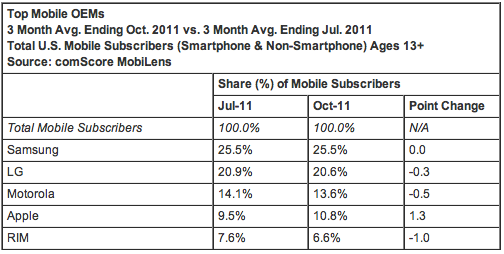The Lumia 710's competition is the newly reinvigorated Curve 9360 from BlackBerry. A device which packs in plenty of features that RIM used to reserve for the top of the line Bold-class smartphones. But does this new Curve have what it takes to best a new, touchscreen only device?
Software
Straight out of the traps it's easy to see how the Nokia Lumia 710 benefits from the Windows Phone 7.5 OS. It's fast, slick, offers almost every feature imaginable and looks the part too.
The new iteration of the OS, version 7.5 (Mango), adds plenty to the foundations set down a year ago. There's now a new unified inbox, a new version of Internet Explorer, multi-tasking and an improved tile system which offers more information at a glance than previous versions.
The Windows Phone Marketplace offers an ever expanding range of apps for the OS, many of which are free of charge, and the support Microsoft has given developers is evident here.
Right now Windows Phone 7.5 is excellent, in a year's time it could be world-beating.
The Curve 9360 runs on version 7.0 of BlackBerry OS which, though billed as a 'new' version, is more an update to version 6.0.
The OS is still fast, simple to use and very efficient though. So it hasn't lost its virtues with age.
For all of its distinguishing qualities, and there are plenty, BlackBerry OS 7.0 seems very dated. The interface is still largely text-based, the number of apps available via the BlackBerry App World is minute compared to its competitors and with no widgets or live information functionality you may feel like you've stepped back to the early noughties should you pick one up.
Winner - Nokia Lumia 710
Screen
BlackBerry's Curve 9360 comes with a 2.45-inch HVGA+ screen with a very pleasing pixel density of 246PPI.
Despite its small size it's a dream to watch video clips on (or even full movies if you commute) and the overall performance is fantastic. The colours are warm and realistic and the viewing angles are second to none.
The Nokia Lumia 710 features a 3.7-inch TFT capacitive touchscreen which is every bit as decent as the myriad others on the market right now, with the added bonus of having a pixel density of 252PPI, giving it the edge over many of its competitors.
As with the Curve 9360, the Lumia 710's display offers crisp, vivid colours, responsive performance and reasonable sunlight legibility.
Winner - Draw
Power
Nokia opted to fit the Lumia 710 with a large single-core processor, and the 1.4GHz Scorpion CPU does its job superbly. In addition to the main chip the device benefits from an Adreno 2.5 GPU and 512MB RAM, giving it a predictably solid drive-train with which to keep the Windows Phone OS buzzing along.
One area where the Lumia 710 is lacking is support for external memory cards as it doesn't offer any at all. But the device does come with 8GB of on-board storage, so that needn't be a big issue.
The BlackBerry Curve 9360 is powered by an 800MHz CPU and also offers 512MB RAM, which may seem small but is perfectly adequate to keep the little messenger moving along at a fair turn of pace.
The device supports MicroSD cards up to 32GB in size to make up for its less than impressive 512MB of storage out of the box.
Winner - Nokia Lumia 710
Camera
RIM doesn't have a particularly good track record for the photographic capabilities of its devices and we're sorry to say that this hasn't changed with the Curve 9360.
The device's 5-megapixel camera with LED flash, geo-tagging, face detection, image stabilisation and VGA video capture is disappointing from top to bottom, with lacklustre video capture and an awful fixed focus system for capturing stills.
In ideal light conditions with a stationary subject you can capture a fairly decent image, but let's be honest, who has the time or inclination to wait and organise when they're taking a photo out and about?
The Nokia Lumia 710 has a 5-megapixel autofocus camera which is very much more the ticket. The camera benefits from an LED flash, face detection and geo-tagging, as well as 720P video capture, and the results are pleasing, though a little noisy in low-light conditions.
If you're looking for a device to snap photos on the move then the Lumia 710 should make your shortlist. The BlackBerry Curve 9360 most certainly should not.
Winner - Nokia Lumia 710
Form & Build
Nokia Lumia 710 - 119 x 62.4 x 12.5 mm, 125.5 g
BlackBerry Curve 9360 - 109 x 60 x 11 mm, 99 g
Both devices in this comparison are exceedingly well built.
The Nokia Lumia 710 is solid, comfortable in the hand and at the ear, and is light enough not to feel like an encumbrance in your pocket all day long.
The BlackBerry Curve 9360 is also a tremendously well assembled smartphone. It's small, well designed, offers an incredible hardware QWERTY keyboard which makes messaging and emailing a pleasure, and is comfortable to make a long call on.
If we had to choose and, well, we do, then we'd tip our hat at the Curve 9360. It's super small, offers excellent battery life and feels like you could kick it around a 5-a-side pitch for 90 minutes without breaking it (not that we'd advise it).
Winner - BlackBerry Curve 9360
Despite a late push, the Curve 9360 has come out second best today. It's a nice, compact smartphone which is available for an excellent price, but it's let down by a sub-par camera and lack of quality app support.
The Nokia Lumia 710 on the other hand, is a solid second entry into the Windows Phone 7 range and, as we've seen with the Lumia 800, with Nokia's hardware and Microsoft's software the only way is up.






 1:31 AM
1:31 AM
 Simranpal SIngh
Simranpal SIngh









 [
[




















